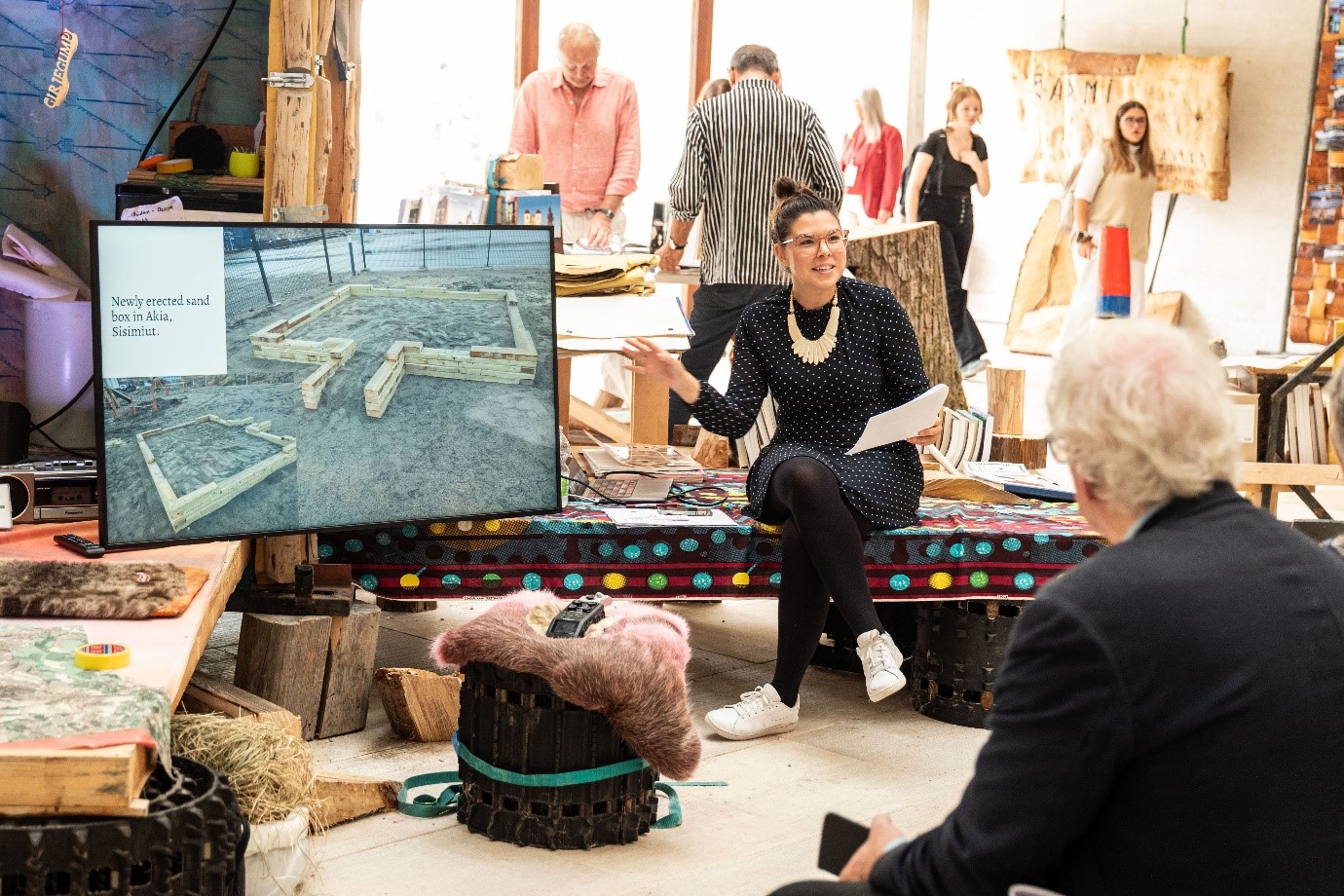PRIVACY-researcher Asta Mønsted contributed to the Venice Biennale of Architecture
This year’s Venice Biennale of Architecture opened in May and is running until the end of November. On October 12 archaeologist and postdoctoral researcher at PRIVACY, Asta Mønsted contributed to a workshop in the Nordic Pavilion of the Biennale. The workshop titled Indigenizing Architectures of Remembrance was organized by artists, researchers, archivists, and artisans from Sápmi (Lapland), Kalaallit Nunaat (Greenland), Norway, and Denmark. The aim of the workshop was to examine the role of archives in Nordic colonialism and discuss how archives can communicate, include, and respect Indigenous knowledge and practices.
We have interviewed Asta about the workshop.

Photo by Knut Åserud
Could you say a bit more about the aim and the motivation of the workshop?
In essence, the workshop aimed to uncover how historical records and archival materials have been entangled with colonial endeavours in the Nordic regions, while also considering how these archives can be leveraged to bridge gaps, and honor the valuable insights and traditions of Indigenous communities. By addressing these critical aspects, the workshop paved the way for a more equitable and culturally sensitive approach to the use of archives with a relevance in the future.
What was your lecture at the workshop about?
With my paper, I argued that we can strive to select and revive (or implement) some of the old cultural heritage into the modern, Greenlandic architecture. Designing modern architecture while preserving and allowing oral history to evolve requires a delicate balance between embracing contemporary design principles and respecting the cultural narratives and traditions associated with (in this case:) Greenland. For one thing, we can strive to understand the historical and cultural context of the site where the new architecture is being developed by conducting research into the local oral histories, traditions, and architectural styles that have significance for the area. But we can also strive to incorporate elements from the local context into the design, such as materials, forms, and motifs, to create a sense of continuity with the past. Then it won’t just be concrete building blocks, which could have been built anywhere in this world, we would see in the near future, but instead we would see urban environments be supplemented by traditionally anchored elements that echoes the prehistoric past.
